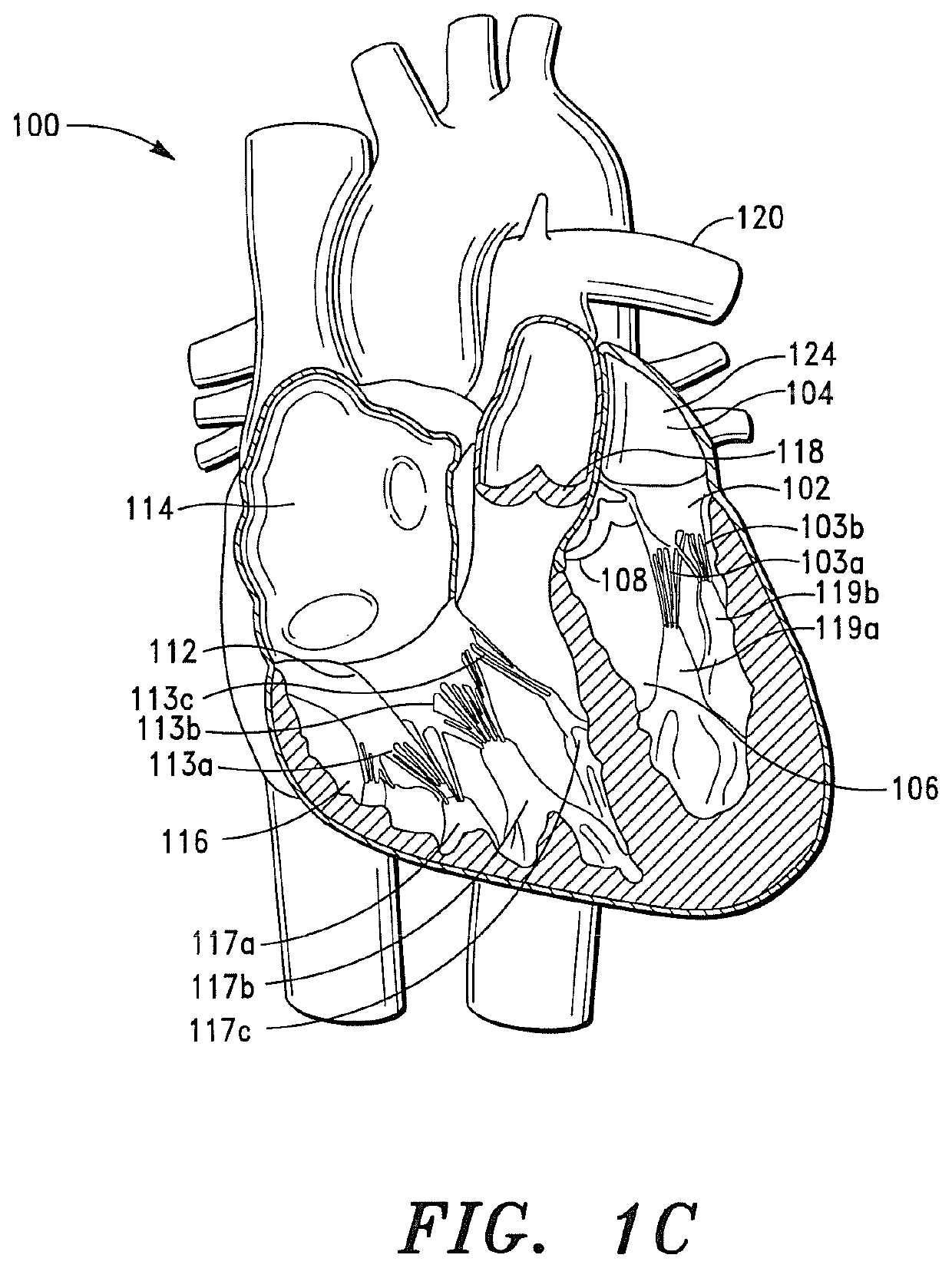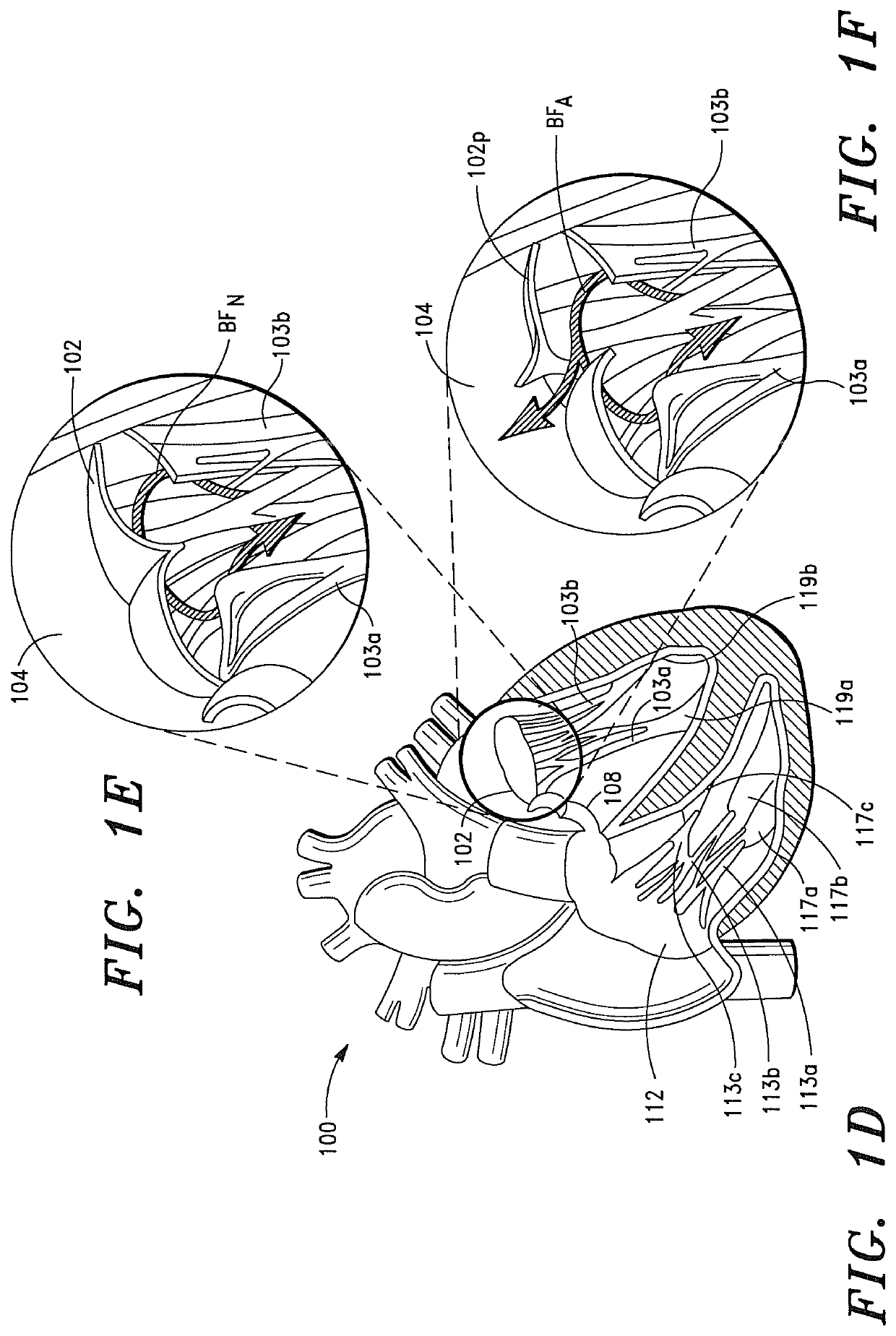Prosthetic cardiovascular valves and methods for replacing native atrioventricular valves with same
a technology of native atrioventricular valves and cardiovascular valves, which is applied in the field of prosthetic cardiovascular valves and methods for replacing native atrioventricular valves with same, can solve the problems of heart failure, adversely affecting organ function, stenosis and insufficiency, etc., and achieves the effect of rapid heart ra
- Summary
- Abstract
- Description
- Claims
- Application Information
AI Technical Summary
Benefits of technology
Problems solved by technology
Method used
Image
Examples
example 1
Assessment of Acute Hemodynamic Function of a Porcine Heart
[0434]A study was performed using a porcine model in order to evaluate the acute hemodynamic function of a porcine heart when the mitral valve of the porcine heart is replaced with a prosthetic tissue valve comprising a base ribbon structure, such as the prosthetic tissue valve shown in FIGS. 8A and 8B.
[0435]The study included a single treatment group consisting of one (1) adolescent pig (sus domesticus). The pig received anesthetic premedication, followed by anesthetic induction via intravenous injection. After the pig was anesthetized, a prosthetic tissue valve comprising a base ribbon structure was implanted into the mitral valve region of the porcine heart.
[0436]During the implantation procedure, the distal end of the prosthetic tissue valve was secured to a predetermined region of the left ventricle myocardium between the anterior and posterior papillary muscles of the porcine heart.
[0437]Approximately two (2) hours aft...
PUM
 Login to View More
Login to View More Abstract
Description
Claims
Application Information
 Login to View More
Login to View More - R&D
- Intellectual Property
- Life Sciences
- Materials
- Tech Scout
- Unparalleled Data Quality
- Higher Quality Content
- 60% Fewer Hallucinations
Browse by: Latest US Patents, China's latest patents, Technical Efficacy Thesaurus, Application Domain, Technology Topic, Popular Technical Reports.
© 2025 PatSnap. All rights reserved.Legal|Privacy policy|Modern Slavery Act Transparency Statement|Sitemap|About US| Contact US: help@patsnap.com



